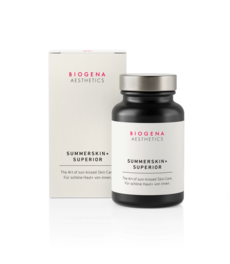The hype around fasciae is not only widespread in professional sports, connective tissue fibres are also being rolled away in living rooms by means of a roll made out of hard foam today. The right "rollout" will counteract back pain and feelings of tension.
But what exactly are fasciae?
Fasciae (lat. band, bundle) are connective tissue fibres that can be found everywhere in the body and connect it in an intelligent way. These collagen power bands hold our body together, support it and thus provide stability. However, fasciae are considerably flexible. Due to their displaceability and elasticity, they provide us with the necessary room that for example our lungs need for breathing. This means that fasciae are a complex marvel that on the one hand offers protection and stability to our organs and on the other hand provides the necessary space for vital processes.
The causes of agglutinated fasciae
Fasciae consist of collagen fibres, water and elastin. These components provide the elasticity and mobility of muscles, but they can easily develop an imbalance: a lack of movement and fluid are a hostile duo that can give the taut power bundles a hard time. The consequences are agglutinations that can manifest themselves in the form of painful tensions, back ache or headache. Malpositions can also overload the tissue in individual areas and reduce components of the elastic tissue. According to current studies, fasciae play a bigger role when it comes to back pain than assumed. Researchers suppose that the intervertebral disc has been focussed wrongly as cause for back pain up to now, whereas fasciae in the back often seem to be the trigger for the annoying pain.
Get on the roller! Release stuck fasciae with fascia training
Nowadays, “fascia pulling“ has established itself as a soothing form of therapy: Interconnections between fasciae are being stretched through slow movements by trained therapists such as osteopaths, massage or rolfing therapists. Fasciae are extended in order to help the connective tissue re-build its form. Applied regularly, fasciae regain their flexibility and back pain can subjectively improve to a significant degree. In order to prevent agglutinations, an ever greater number of desk workers uses a special fascia training. But rolling the right way has to be learned:
How do you "train" your fascia?
All you need for a fascia “roll-out” is a non-slip mat, a fascia roll and close-fitting clothing. The self-massage is very simple and no previous knowledge is necessary. Depending on which body parts should be rolled, you lie down on the mat in a supine position or on your side and slide the fascia roll between you and the mat. Then you can start to roll softly and slowly back and forth, hands and arms can serve as a support on the floor. Beginners might want to start the application in a standing position: The roll is pinched between back and wall and moved softly up and down. The front and back thigh muscles as well as the calves and the bottom are well suited as a start of a self-massage with the roll. At the beginning, you can do up to ten roll runs per body part. The application can be slightly painful at the beginning, but with regular training and correct application, a perceptible improvement occurs. In case of doubt, trained therapists will advise on the correct application.
How many times a week should you do fascia training?
To benefit from the beneficial effects of fascia training, it is crucial to roll out the fascia as regularly as possible and over a longer period of time. Three applications per week are a good guideline to achieve lasting effects.
Effects of the exercises
The soft pressure and the rolling movement have a relaxing effect on the tissue. Moreover, the blood circulation in the fibres improves and the tissue turns elastic again. The nutrient supply of the tissue improves and the metabolic end products are removed more easily.
Fluid and micronutrients for a stable tissue
In addition to exercises with the fascia roller that promote blood circulation, it is essential to drink enough fluids to keep the fibers supple. An adequate supply of selected minerals such as copper or silicon supports the maintenance of normal connective tissue. keep the tissue stable. Nutrients such as vitamin C, which contributes to collagen formation and thus to normal skin function, are also worth mentioning in this context.
Result
In general, rolling is a very recommendable health-promoting measure. However, certain sensitive areas of the body such as the cervical spine, the knees or the kidney area should be left out when self-massaging with the roll
When is fascia training not suitable?
Hands off the fascia roll also after surgery or when you have fresh scar tissue as well as during pregnancy. Other contraindications are varicose veins, haematoma, inflammations or thromboses. Caution should also be taken if you suffer from sensory disturbances, osteoporosis or cardiac insufficiency. The roll should not be used in these cases. The same applies to persons who take blood-thinning medication. For all other people, the motto is:
Move instead of sticking together.








